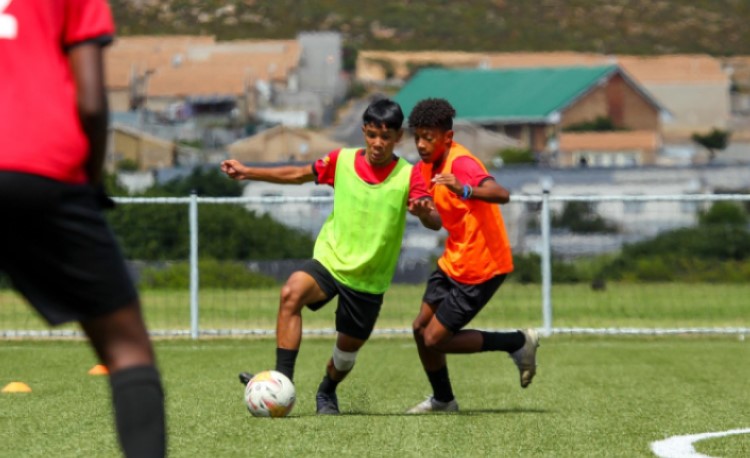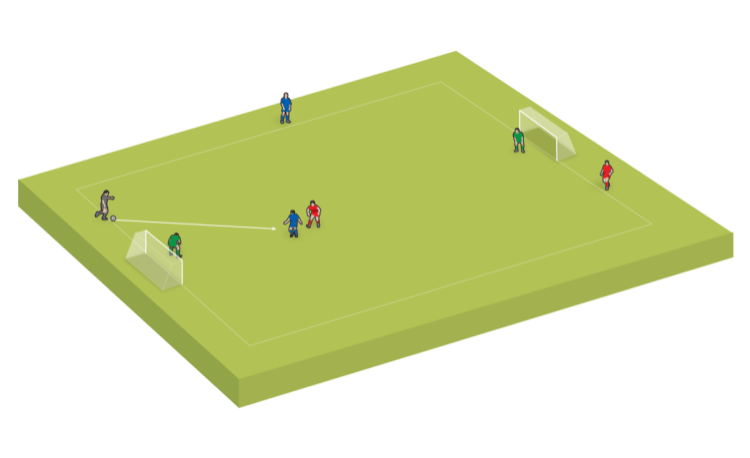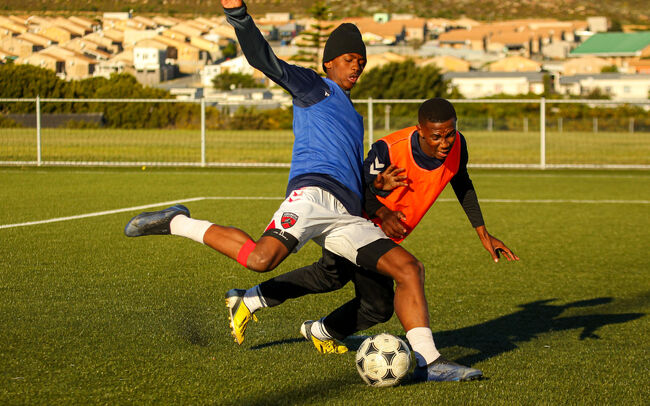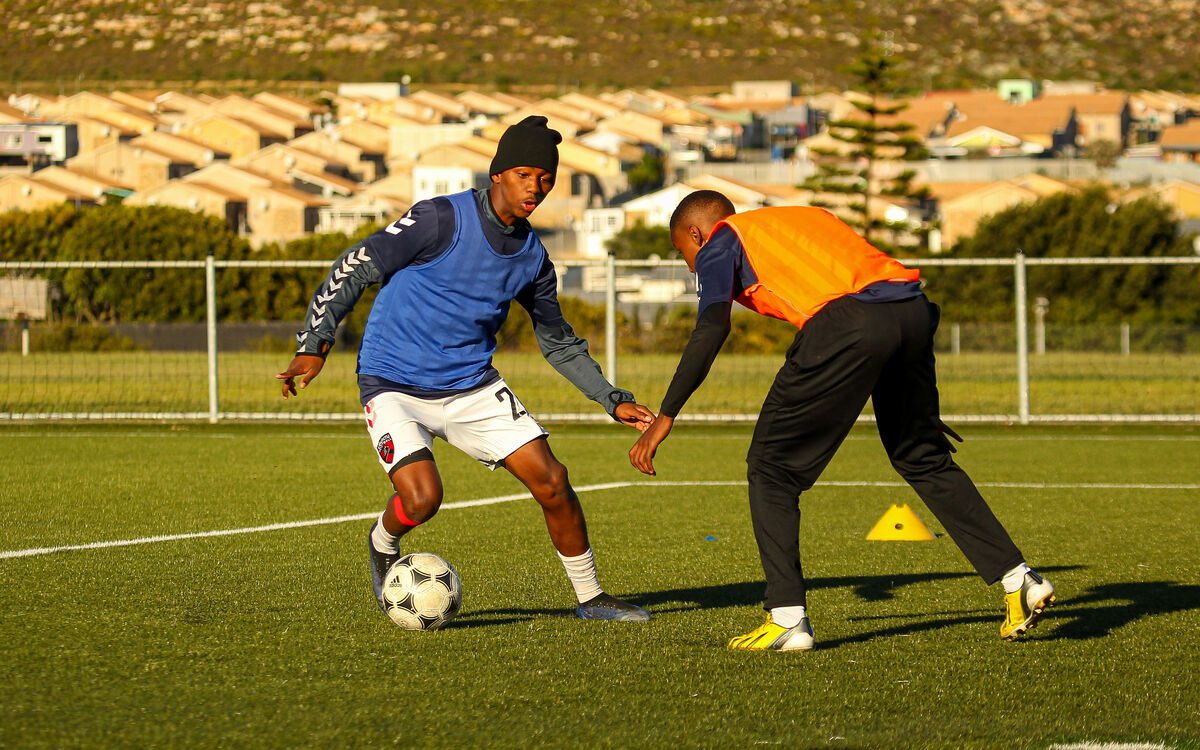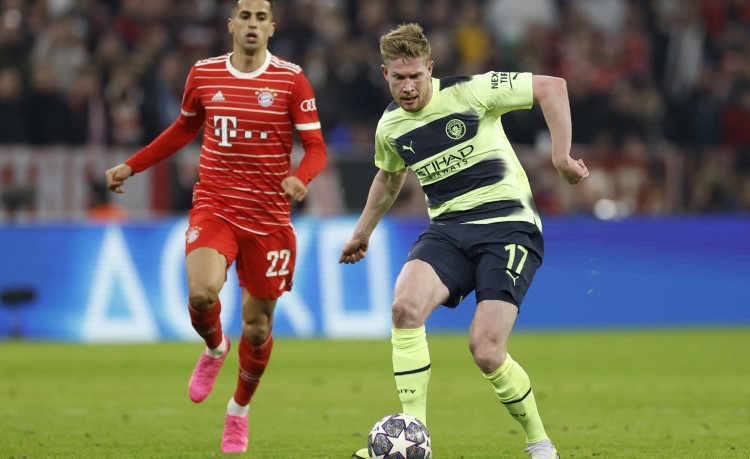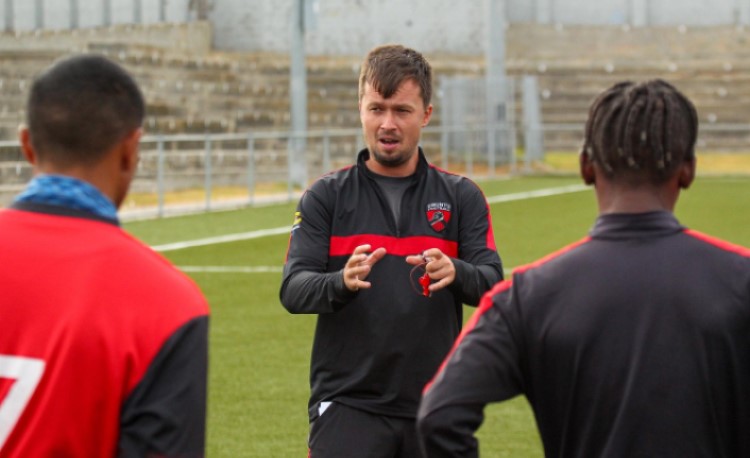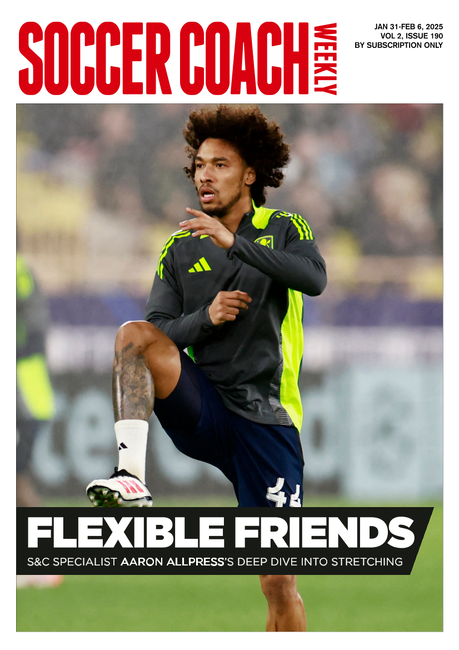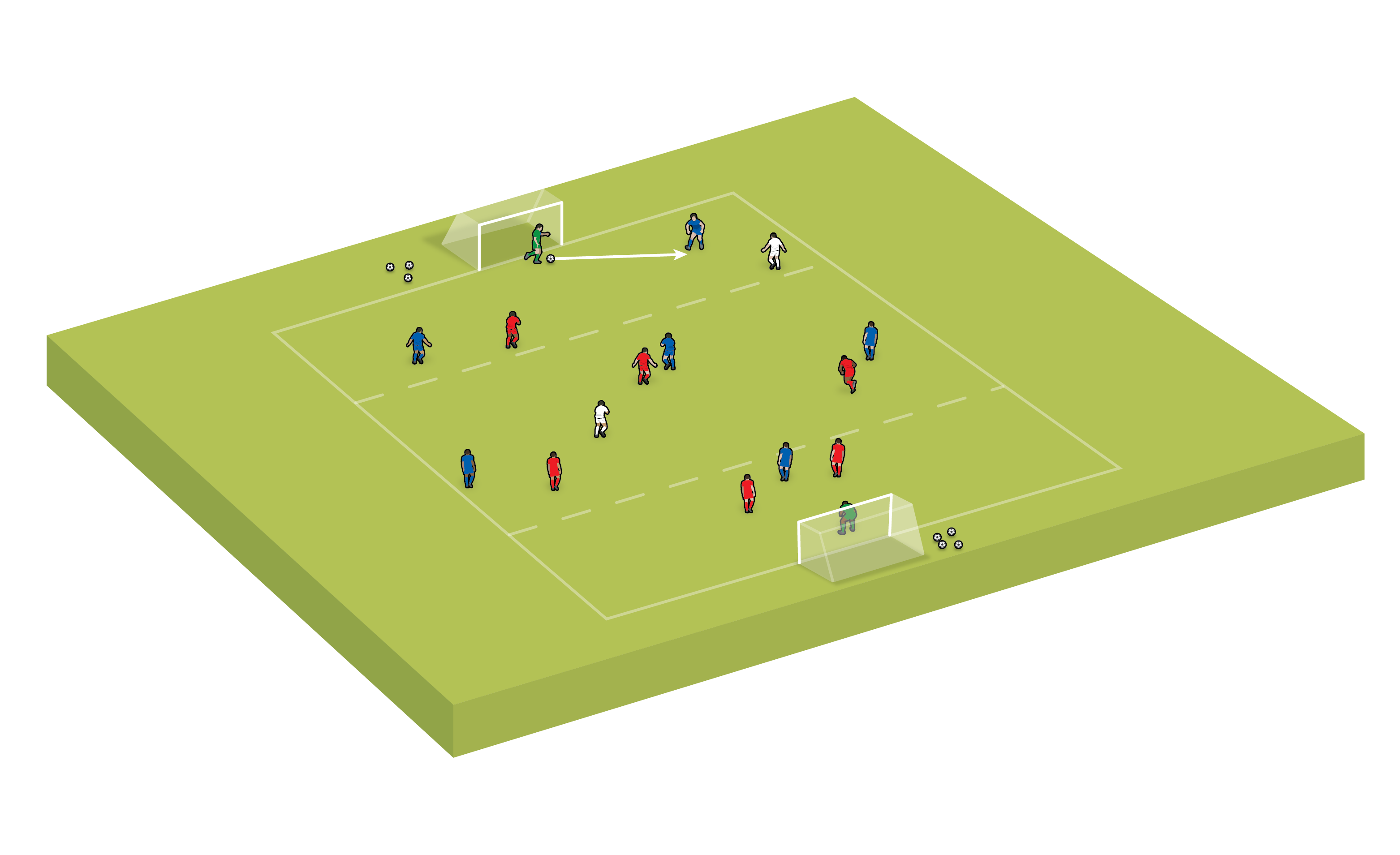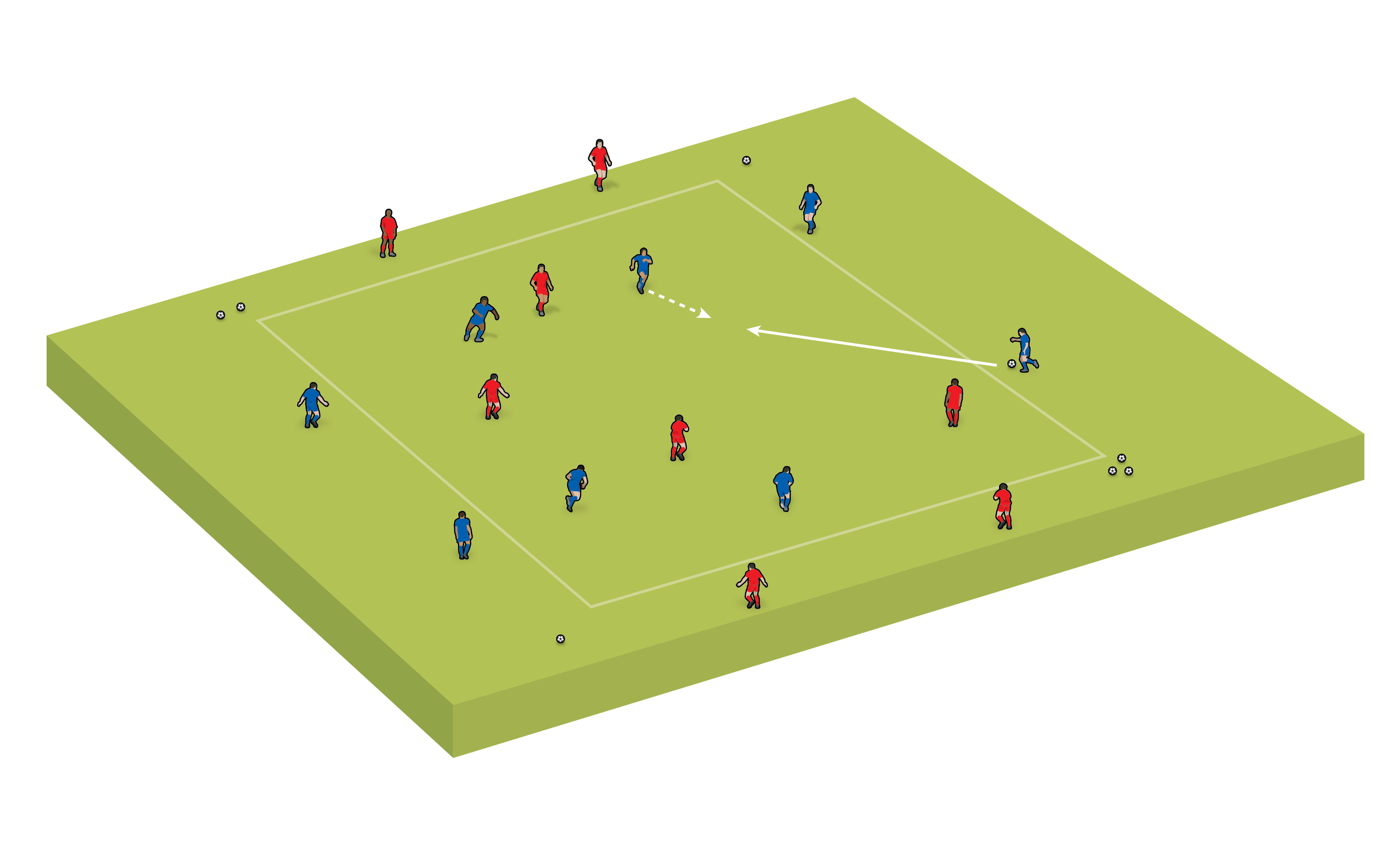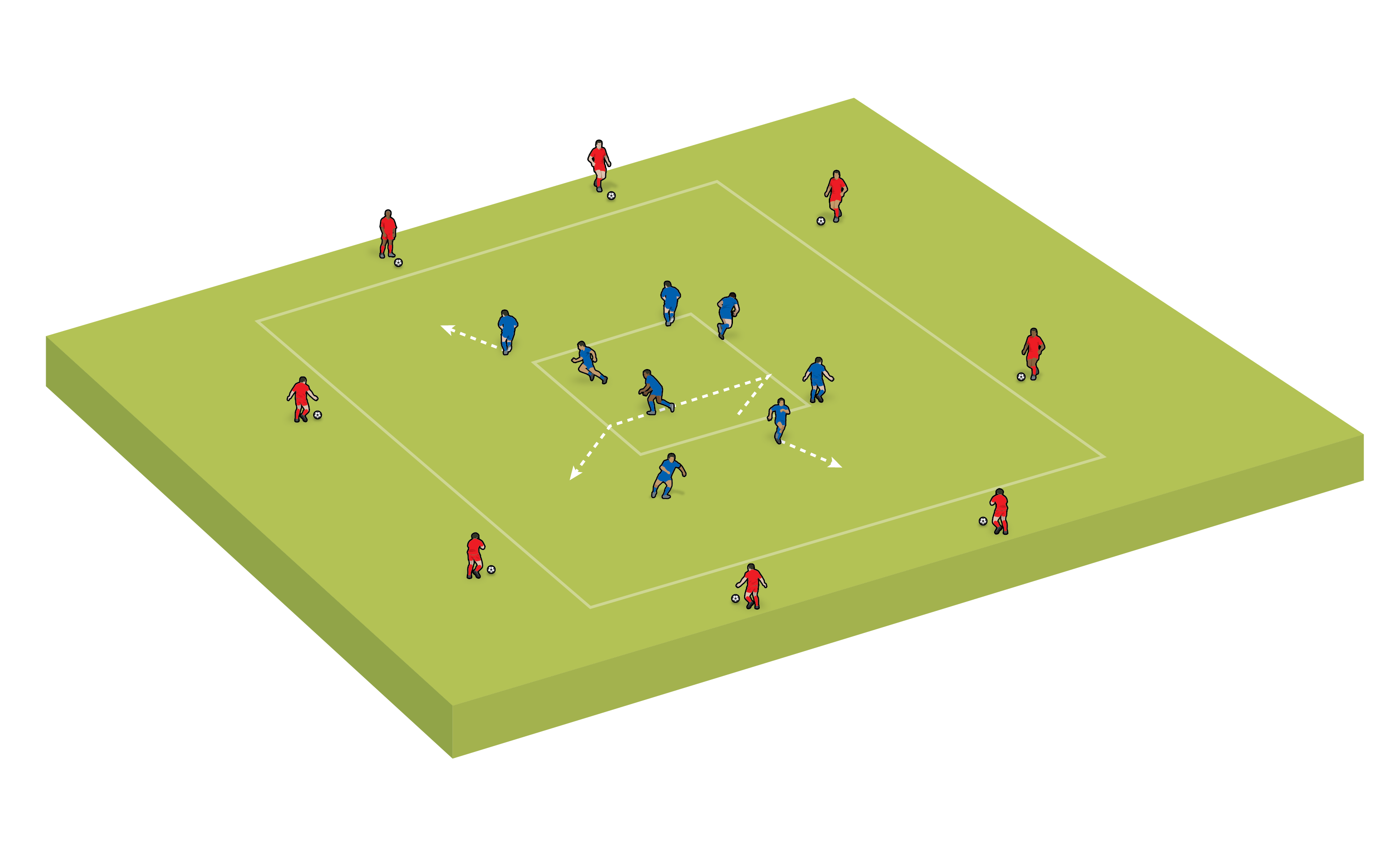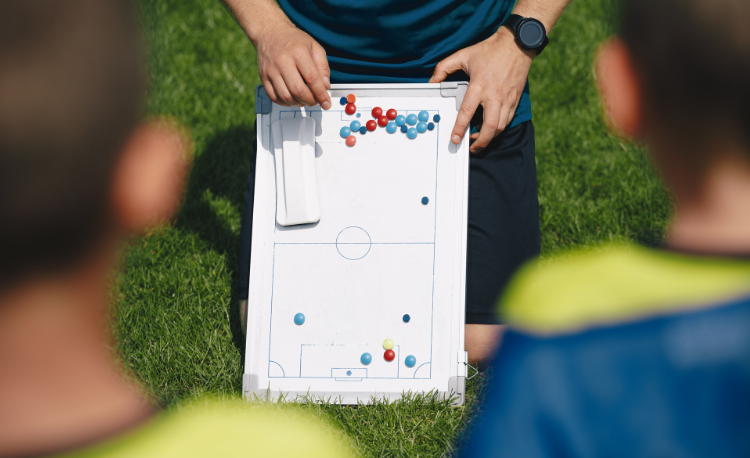Developing soccer skills: turning
Moritz Kossmann tells Steph Fairbairn how to teach the ’under-appreciated’ skill that opens doors, looking at why turning is so important to the game and what the building blocks of learning turning techniques are.
Moritz Kossmann defines turning as: “A change of direction on the ball while you are in possession of the ball".
Moritz is a coach at Ubuntu Football Academy in Cape Town, where he coaches the U21s, who play in the third tier of South African football, and oversees the senior section, made up of U18s and U16s.
Having previously discussed receiving the ball, moving with it and finishing, he now talks to SCW about turning – why it is so important to the game, how players off the ball can support the player in possession while turning and what the building blocks of learning turning techniques are…
SCW: Why is turning so important to the game? What can it help us do?
MK: There are two considerations. The first is turning in relation to protecting the ball and trying to maintain possession on an individual level. The second is turning in terms of trying to create dynamic situations and space towards the opposition’s goal.
Players like Xavi and Xabi Alonso were masters of protecting the ball and maintaining possession.
Let’s say they are facing the opposition in a forward direction. They are being pressed from two different sides by different players and so run the risk of losing the ball.
"One consideration is turning to create space towards the opposition’s goal..."
In midfield, in 360-degree situations, these are action patterns that happen quite a lot. So these players would very often use their body as a shield between the opposition and the ball, thereby being able to maintain possession, because now they are more easily able to pass the ball to someone else.
If the opponent is still pressing, you can draw fouls by using your body as a shield. Then the action of pressing is over, because the opposition has to move 10 metres away.
On an individual level, there are two aims in a football action. One is to give the ball to a team-mate in a better position and the other one is to try to not lose the ball. Turning and shielding is a crucial part of that.
The second [overarching] consideration is turning towards the opponent’s goal and creating attacking situations.
A common coaching point you hear is ’play what see’ - so you play towards where you look. But the opponent, especially as we get slightly more advanced, is also going to read what you are going to do.
One way to anticipate opposition actions is to look at where the eyes of the opponent are looking. If I am looking towards my right, it is more likely that I’m going to pass to my right. Perhaps you, as my opponent, can then slightly anticipate this action and intercept the ball while it’s on the way.
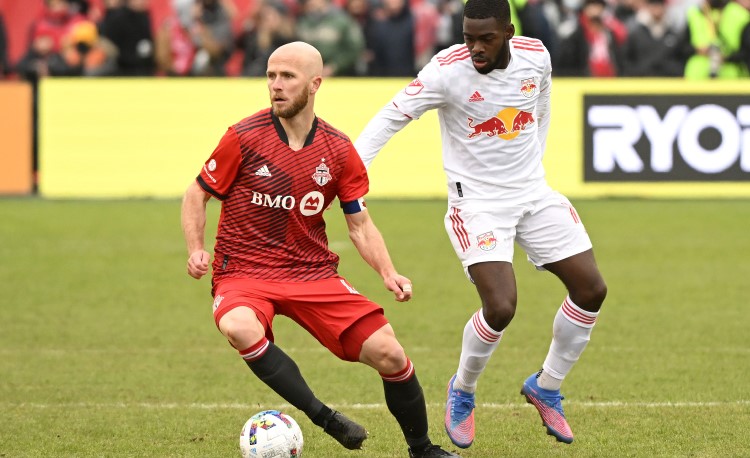
A turn can punish the opponent for making that sort of anticipatory defensive action: I am looking towards one side, but I’m turning towards the other side. Now the opposition has shifted over in anticipation towards the side I was looking towards, but now I’m going somewhere else, into space, and perhaps also have open team-mates ahead of me.
So a turning action in an attacking context is very often a surprising action that opens the game up. Very often, successful attacks on a team level start with a surprising turn by a player on the ball.
It is very much an initiating action towards creating more dynamic moments. So it is crucial for us to encourage our players, especially in the opposition half and in the attacking third, to make turns because they are ways to open up the game and create dynamic moments with a lot of promise.
But it’s also technically not an easy action to execute.
SCW: Is it natural for players to have one or two standard turns in their locker, that lend themselves to how they move their body and how they move with the ball?
MK: Absolutely. At any level of the game, this is what most, if not all, players are doing.
Look at Lionel Messi as an example. He doesn’t perform 25 different types of turns. He has got a few standard techniques.
The genius of a football action is using the correct action in the right position, at the right moment, in the right direction and at the right speed.
Performing the turn in the moment where it’s appropriate, and at the right speed, is ultimately the key. It needs to be a solution to a footballing problem.
That’s where, in terms of basic technique, not having a large number of various turns you do is fine, as long as you are applying your technical solutions to the moments where it is appropriate.
SCW: Is there value in unopposed practices for turning?
MK: Absolutely. I’m not a fan of this dogmatic approach of ’opposed practice is everything, unopposed practice is bad’.
The starting point should be our team and our players. If we, as coaches, feel an unopposed practice for something like turning is the way to teach our players, then we have considered the needs of our players as our starting point. I have absolutely nothing against that.
It could be done at the beginning of a session, it could be done in a recovery session at a higher level. I absolutely don’t mind that at all.
SCW: How important are players off the ball when a player is turning?
MK: I think the most crucial thing is to move away from the player who is turning, because if you remain close to them you are attracting more opposition pressure, and could be clogging the space. The player is then more likely to turn into pressure.
"Performing the turn in the moment where it’s most appropriate is ultimate the key..."
If I am moving away from the turning player, I might also force the opponent to mark me and move away at the same time. I’m thereby creating space for that player to turn to gather speed and make the situation more dynamic. If the situation is more dynamic, it’s more likely to be in favour of the attacking team.
Obviously, communication of where opponent pressure is coming from can be very good. If I hear ‘right shoulder’, I know there is an opponent on my right shoulder and I can turn around on my left shoulder.Or if I hear ‘man on’, I know there might be pressure behind my back that I’m unaware of.
SCW: Talk us through, then, the building blocks of turning, from players starting their soccer journey through to a more advanced level...
MK: I think the most basic one I would teach would be the sole turn, so to turn with the sole of your foot. It is the most stable technique, because you have the ball under control all the time.
Obviously, learning techniques with both feet is also important because it adds to the unpredictability of a player on the ball. That should perhaps be done from the youngest age up anyway.
The next turn I would teach would be the turn where I am wrapping my body around the opponent, because this is one that is very likely to happen more often.
Related Files
I wouldn’t be too prescriptive in teaching players to turn. I wouldn’t be giving them 50 different turns to execute.
I would try to encourage the natural tendencies and preferences of our players by teaching them in small-sided games and allowing them to find solutions in moments.
You can perhaps provoke this by introducing various constraints to the situation, such as the ’no passing back to the team-mate that gave you the ball’ constraint.
Throughout their journey, but especially in the formative grassroots years, encourage players to take risks, allow them to make mistakes and then learn from those mistakes.
As a coach, perhaps don’t be the centerpiece of the show - be a supporting act, a helper for our players in this process, to ask them questions about what they could have done better, especially when very similar mistakes are being repeated.
Practising turning even in an unopposed way and asking players to come up with unconventional terms is a nice thing to do.
"Risk-taking offers a large reward if done at the right moments in the 11v11 game..."
The most important thing is to allow risk-taking - because risk-taking offers a large reward if done successfully and at the right moments in the 11v11 game.
Turning is an under-appreciated and under-discussed topic when it comes to attacking. It can be a real door opener to create promising attacking situations.
Newsletter Sign Up
Coaches Testimonials

Gerald Kearney, Downtown Las Vegas Soccer Club

Paul Butler, Florida, USA

Rick Shields, Springboro, USA

Tony Green, Pierrefonds Titans, Quebec, Canada
Subscribe Today
Discover the simple way to become a more effective, more successful soccer coach
In a recent survey 89% of subscribers said Soccer Coach Weekly makes them more confident, 91% said Soccer Coach Weekly makes them a more effective coach and 93% said Soccer Coach Weekly makes them more inspired.
*includes 3 coaching manuals
Get Weekly Inspiration
All the latest techniques and approaches
Soccer Coach Weekly offers proven and easy to use soccer drills, coaching sessions, practice plans, small-sided games, warm-ups, training tips and advice.
We've been at the cutting edge of soccer coaching since we launched in 2007, creating resources for the grassroots youth coach, following best practice from around the world and insights from the professional game.
